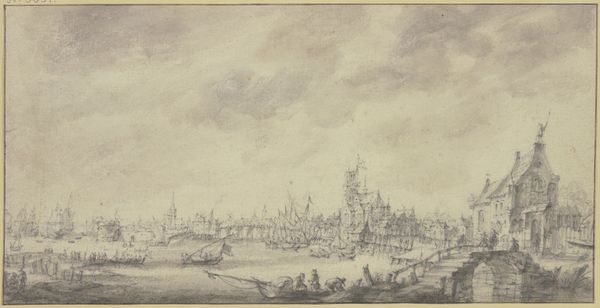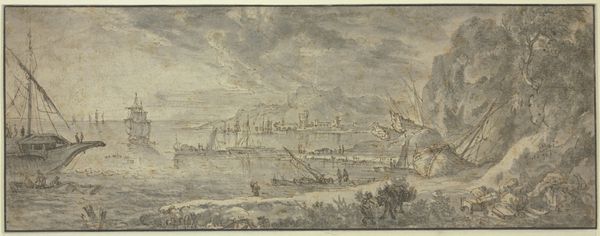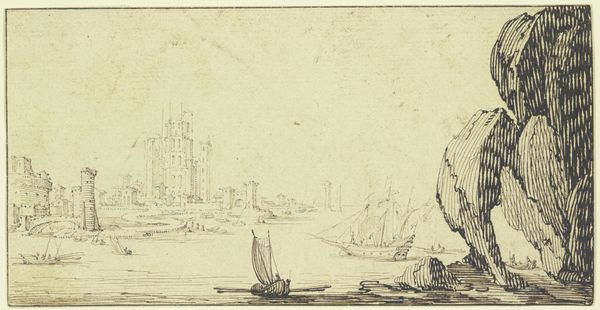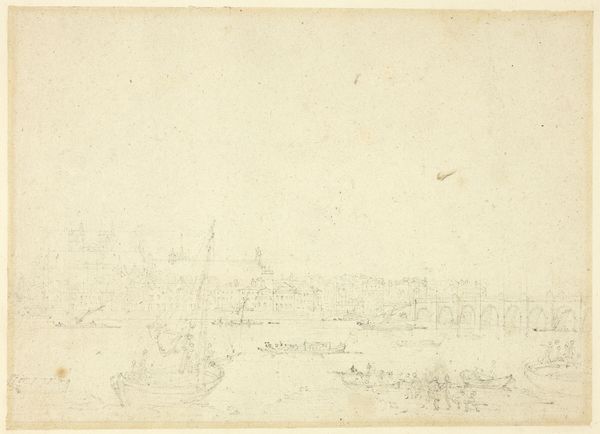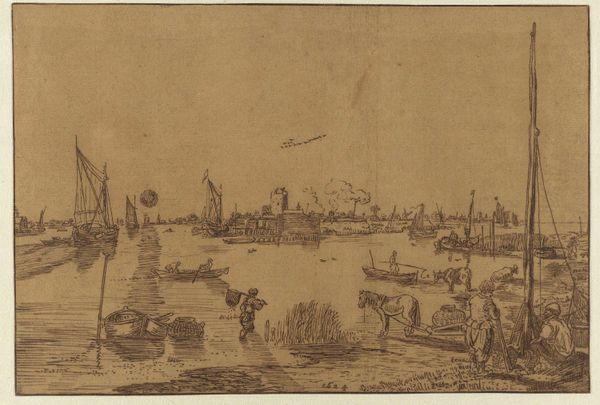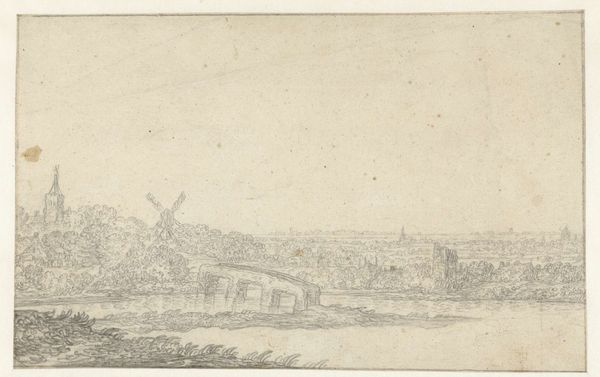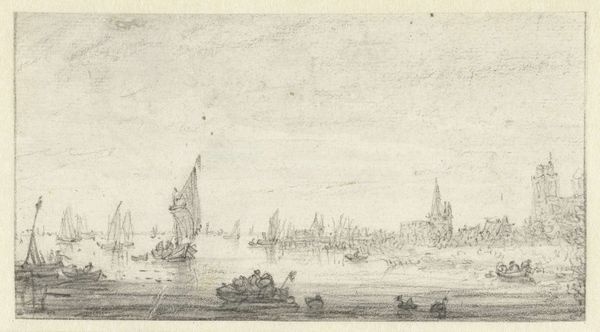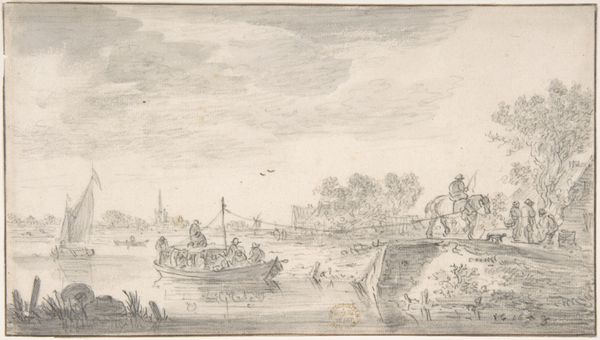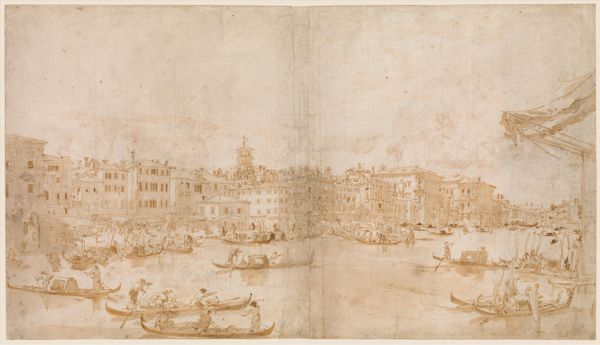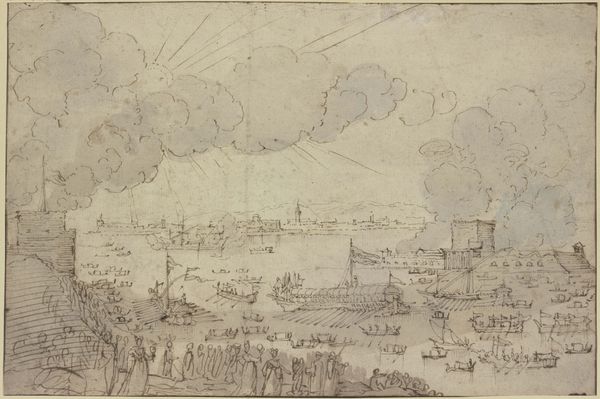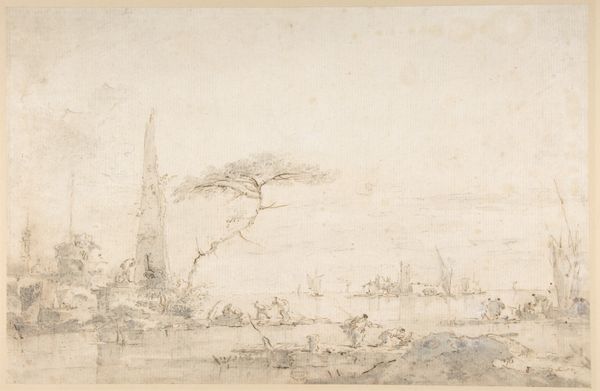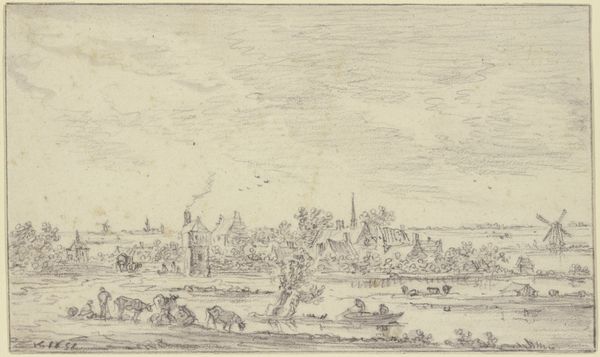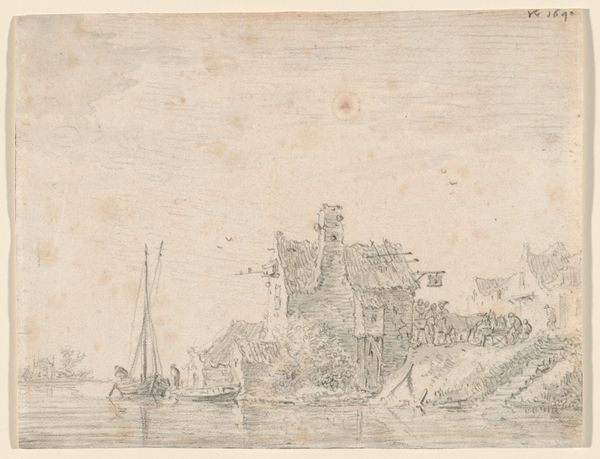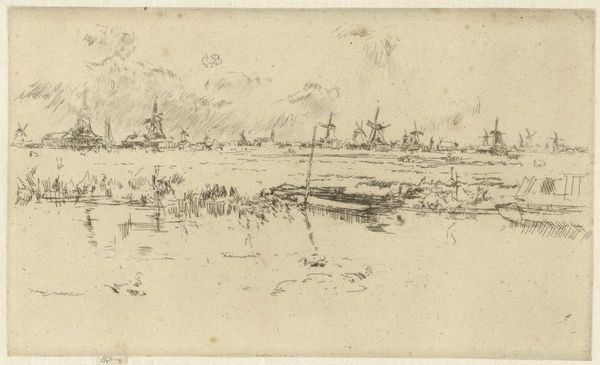
Bei einer ruinierten Festung eine Brücke über einen mit Kähnen befahrenen Fluß, links ein großes Schiff
0:00
0:00
drawing, paper, ink, indian-ink, chalk
#
drawing
#
toned paper
#
light pencil work
#
baroque
#
french
#
pencil sketch
#
incomplete sketchy
#
landscape
#
paper
#
personal sketchbook
#
ink
#
ink drawing experimentation
#
indian-ink
#
pen-ink sketch
#
chalk
#
15_18th-century
#
watercolour illustration
#
sketchbook art
#
watercolor
Copyright: Public Domain
Curator: Here we have a pen and ink drawing, possibly with some chalk underdrawing, by Claude Lorrain. It's titled "At a Ruined Fortress, a Bridge Over a River Plied by Barges, a Large Ship to the Left." Editor: It has a quiet, almost melancholy feel. The scene stretches across a wide panorama. I am particularly struck by the delicate linework. Curator: Indeed, the subdued tonal range and light pencil work beautifully depict the play of light on water and stone. It showcases Lorrain's masterful grasp of atmospheric perspective, even in a relatively quick sketch. One could surmise this was a preparatory work, perhaps from his personal sketchbook, a glimpse into his working process. Editor: Speaking of process, consider the role that academies played. Lorrain’s meticulous observation of nature, seen in this very landscape, informed the classical landscape tradition that underpinned so much artistic production in the 17th and 18th centuries. And the sheer portability of this work, as a drawing on paper, lent itself to reproduction and dissemination, and, in effect, control. Curator: Absolutely, and we should also consider the materiality of it: the type of paper selected, the characteristics of the ink— these seemingly small elements are, of course, socially charged and informed decisions. Lorrain wasn't simply capturing a scene; he was engaging with the artistic materials that shaped his vision. Editor: The ruined fortress suggests a narrative about power, about decline. And placing this fortress alongside figures on boats…It evokes questions about who has access to what kind of transit. Who is included, who is excluded, by these visible means of travel? What narratives does this river tell, and who gets to tell them? Curator: These are important considerations that push the drawing into broader social histories. Analyzing the consumption of such works can tell us much about patronage, class, and artistic markets. Editor: Exactly. We often overlook the power dynamics inherent in something as seemingly innocuous as a landscape. Lorrain offers us beauty but also a quiet contemplation about how images function and whose interests they serve. Curator: A fantastic overview. Looking closely at the process and materials, and then widening the frame to see how those elements connect to culture – that, for me, is the real beauty of studying art history. Editor: I couldn't agree more. Thank you.
Comments
No comments
Be the first to comment and join the conversation on the ultimate creative platform.
